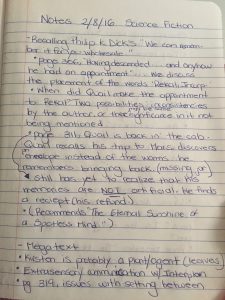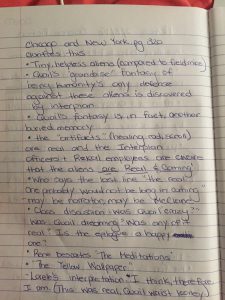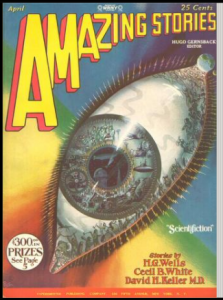RWA5.1: “Hyper-Reading” Del Rey
This week, rather than engaging solely in “close reading,” as we have for the last several weeks, we will engage in a combination of “close reading” and what the literary critic N. Katharine Hayles refers to as “hyper reading.” To engage in this “hyper reading,” or what is sometimes called, “distant reading” exercise, please read Lester Del Rey’s “Helen O’Loy” (1938) in the context of its original publication. The story was published in Astounding Science Fiction and edited by John W. Campbell. If you’d like to read a bit more about the author, you will find information about Del Rey here.
While you will certainly attend to the elements of fiction and science fiction in the story as you read it, you will also be thinking about these and the story in general in relation to other stories and texts published in the magazine. To do this, please flip through the issue of the magazine in which the story was published. Look at the paratextual elements: the cover, the advertisements, the table of contents, the editor’s introduction, and the titles and authors of the other stories included. Then, please read the story, attending not only to the verbal content of the story but also to any illustrations or captions that accompany it.
Afterward, in your Reading Journal, please write about your experience of reading this story. Did reading it in the context of its original publication change your understanding of the story? If so, why? If not, why not? How did the inclusion of one or more illustrations relate to your reading of the story? Did the illustration(s) enhance your understanding of the story or were they more of a distraction? Did the illustrations function in some other way? Please explain.
Finally, of the many different paratextual elements of the magazine (cover, illustrations, advertisements, titles, captions, table of contents, editorial), choose one that most stood out for you. Why did it interest you?
For your reference and assistance with this Time Travel Experience:
Wikipedia Timeline of Historic Inventions
RWA5.2: Literary Studies and SF Keywords: Please read through the definitions and comments that have been contributed to the SF Keywords post by members of our class and review this list of terms, making sure that you have an understanding of what each one means. If you have have any questions about any of these terms, please bring these to our next class session.








